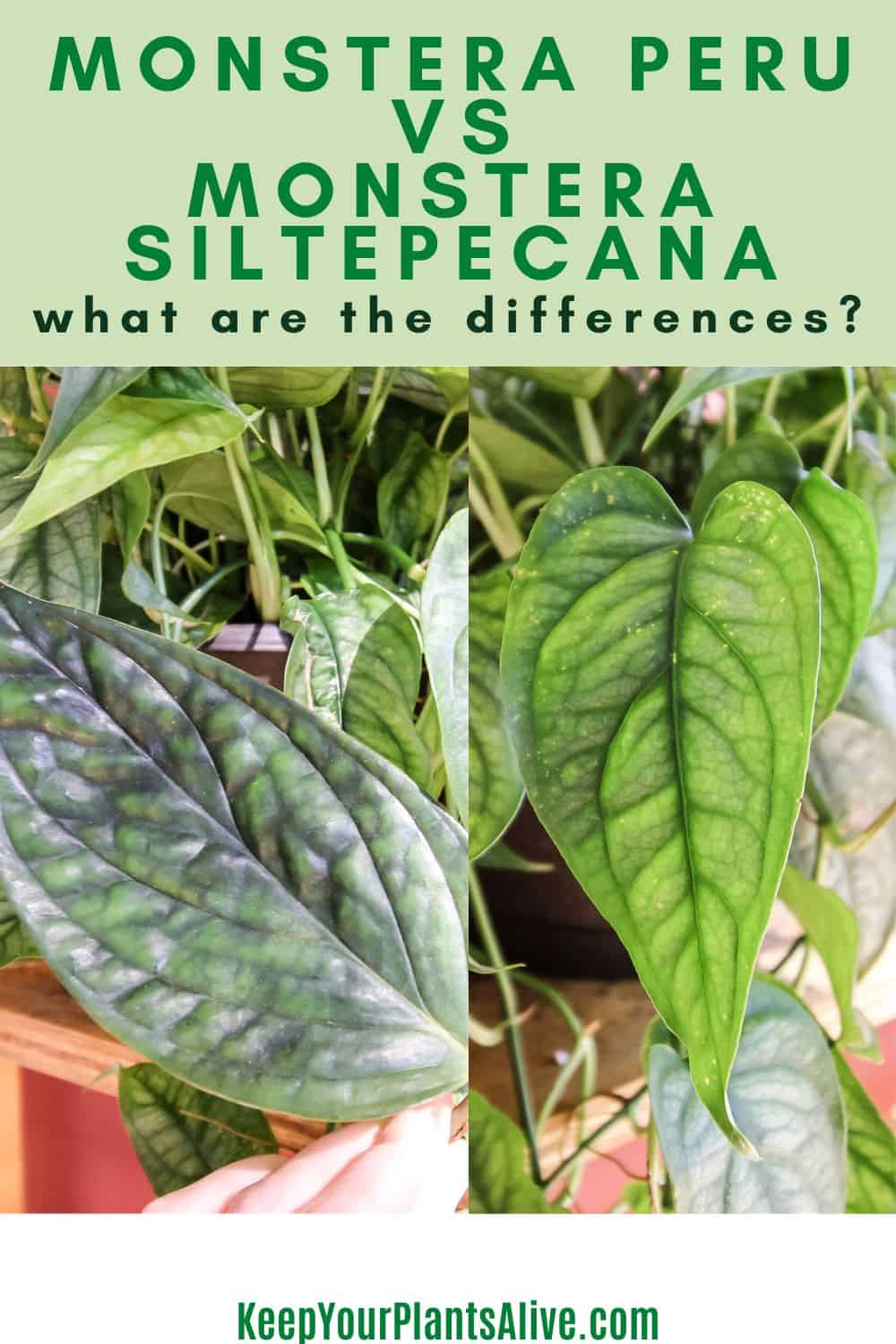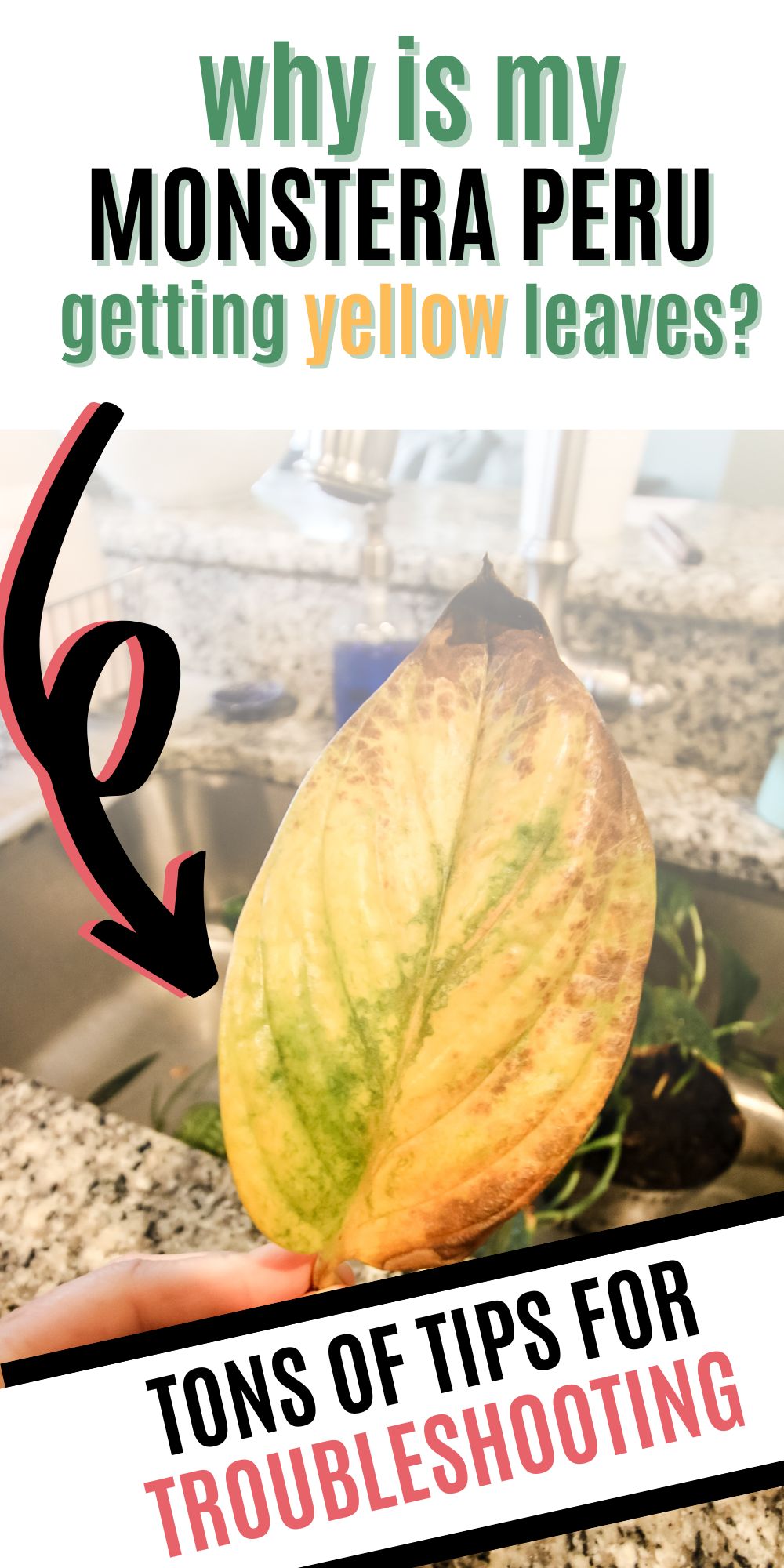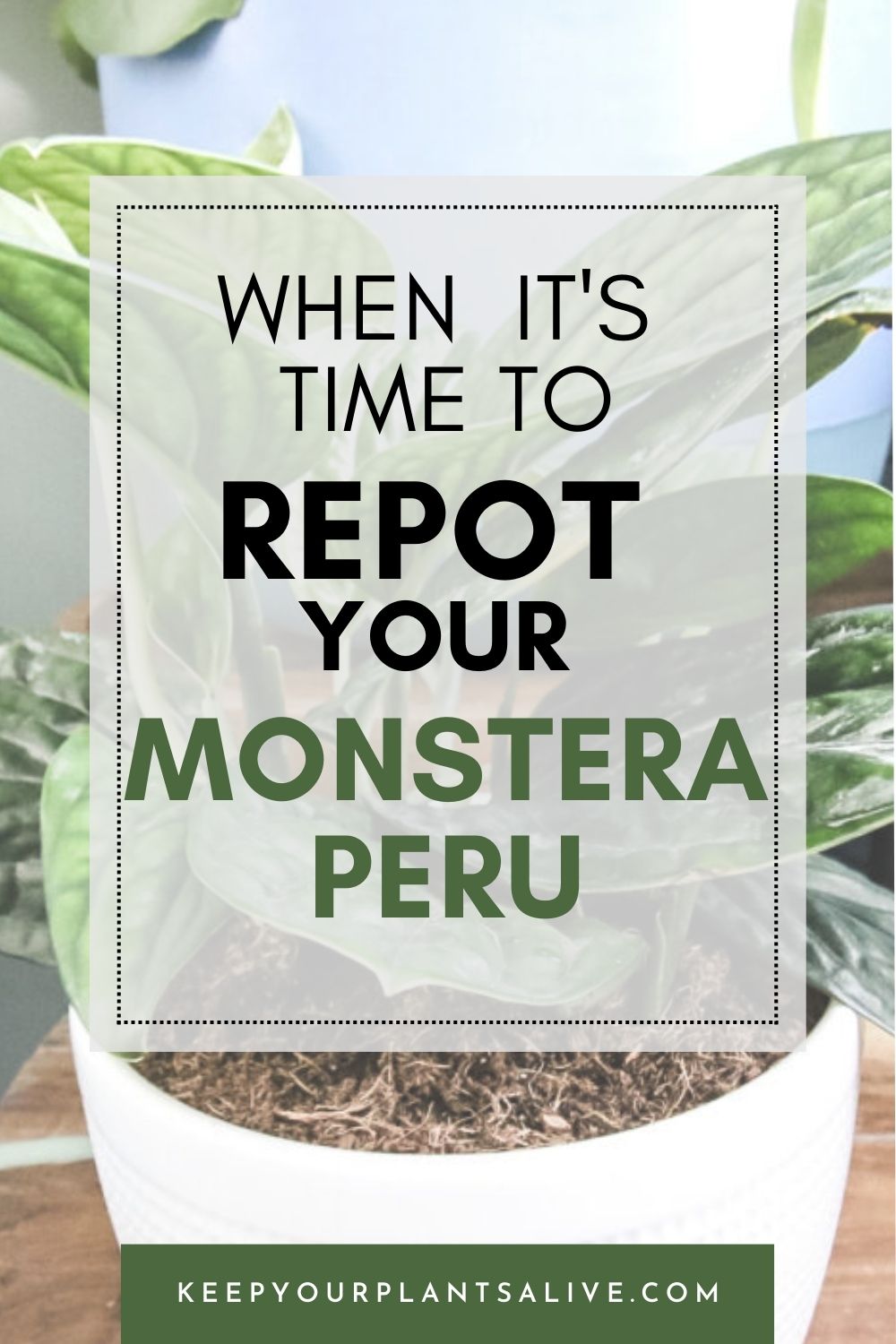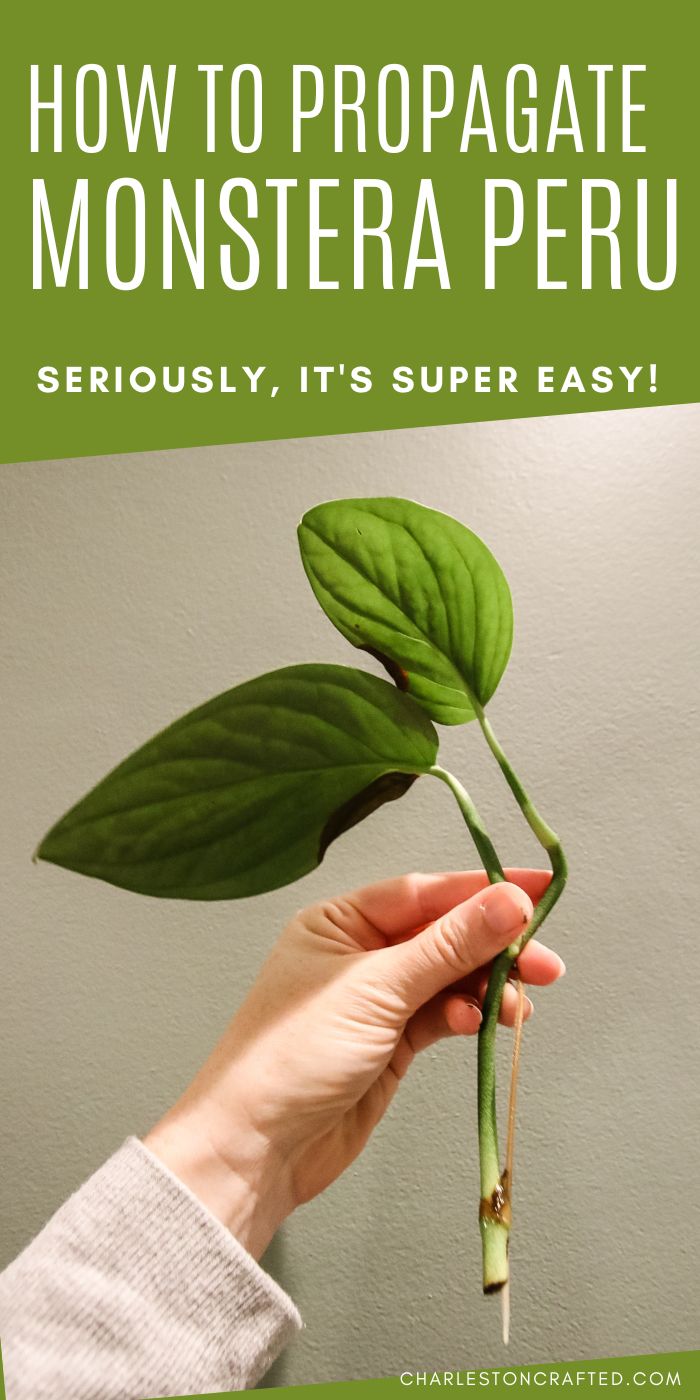Having problems with your Monstera Peru? Here is a complete Monstera Peru Troubleshooting with the most common problems + their solutions!
Monstera Peru are gorgeous, lush green houseplants. They have large, textured leaves and are really eye catching on a shelf.
So, it can be a major bummer if you Monstera Peru (aka Green Galaxy plant) has problems and issues.
Other names for Monstera Peru include:
- Green Galaxy
- Monstera karstenianum
- Epipremnum Marble Planet
While these tropical plants are generally easy to care for, there are a few common monstera peru problems.
Here are some of those problems and some monstera peru care tips to prevent and treat the issues!

Monstera Peru PDF Care Guide
Join the (free!) KeepYourPlantsAlive+ community to access this exclusive printable plant care guide! Once you sign up, you can right click & save the JPG care guide. Or keep scrolling for more!
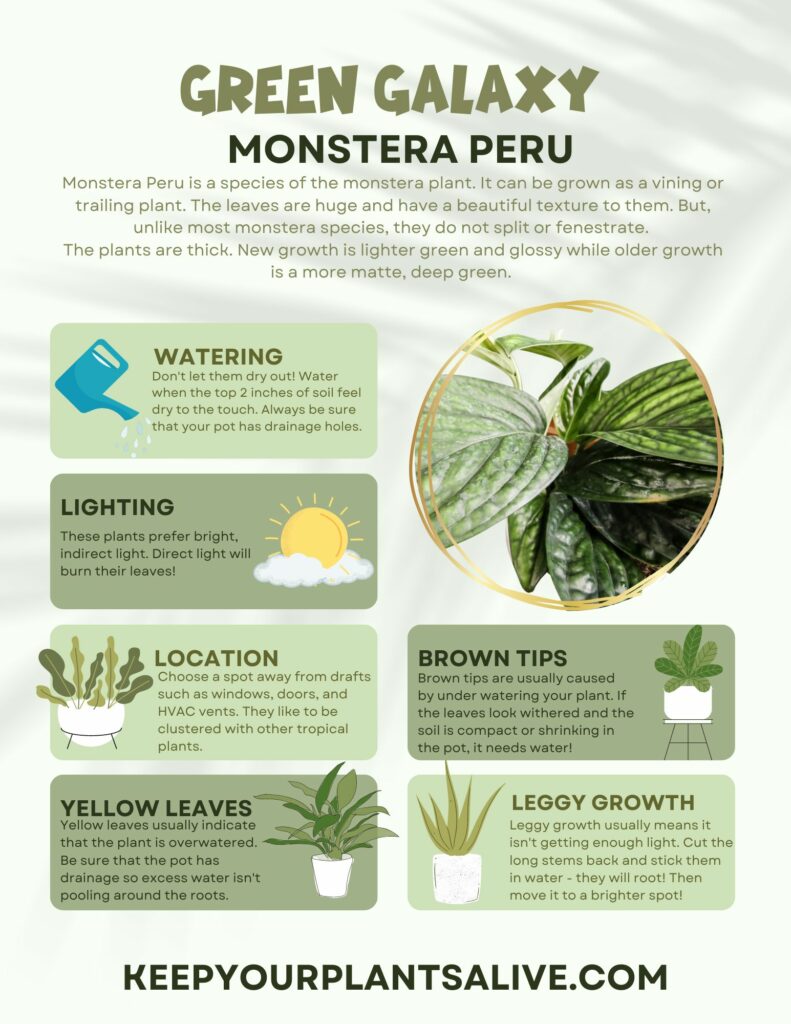
Common Issues with Monstera Peru plants
The most common monstera peru problems include:
- yellow leaves
- browning leaves
- pest infestation
- root rot
Yellowing Leaves
If any monstera variety is getting yellow leaves, it's not a good sign. Leaves that turn yellow are not going to turn back green - they are going to fall off and die.
Yellowing leaves is usually caused by overwatering, nutrient deficiencies, or improper lighting.
Overwatering means your plant is too soggy. This could be watering too much or too frequently. But, it almost always means that your pot is not draining well.
Nutrient deficiencies mean your plant has to choose where to send it's limited nutrients, and yellow leaves could be a sign that the plant is abandoning a leaf. Luckily, this is easily treated with fertilizer.
Finally, if your plant is not getting enough light, it can start to get yellow leaves. This is easy to fix by getting it more light.
What to do about it
If your plant is over watered, dry it out! Then, wait longer between waterings and be sure that your pot has plenty of drainage.
If you suspect a nutrient deficiency, treat your plant with a houseplant fertilizer. Always follow the instructions on the bottle and never over fertilize.
For plants that are not getting enough light, moving them to a brighter spot (still indirect, but more light) will help to improve the leaf coloring moving forward.
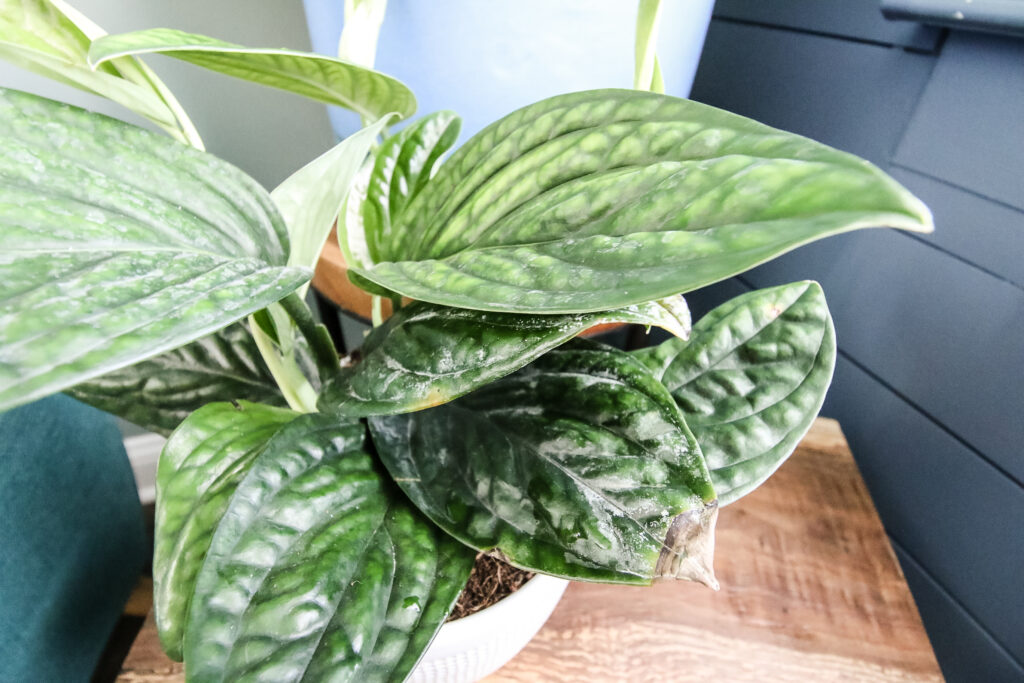
Leaf Browning
Brown leaves or brown spots/tips on monstera peru leaves almost always indicate that the plant is dry. This could be due to a lack of moisture or too much heat.
This could be due to under watering or lack of humidity. These are tropical plants that are used to a decent amount of humidity in the wild!
Your plant also could be getting brown and crispy from too much light and heat. They prefer bright indirect lighting and direct light will burn the leaves.
If your plant is in front of a vent or catching a draft, the heat could be causing brown spots on the dark green leaves as well.
What to do about it
If the issue is lighting, move the plant out of direct light and away from vents or drafts.
If the issue is watering, up your game. Water your monstera peru when the top 2 inches of soil feel dry – usually every 7-10 days. It will need more water in the hot months and less in the cool months.
To increase humidity, run a humidifier, cluster your plant with other tropical plants, or add a pebble tray under your pot.
Maintaining proper humidity levels, adjusting lighting conditions, and establishing a consistent watering routine are your best action steps to prevent leaf browning.
You can use scissors to cut any brown spots off of your leaves. If any leaves are more than ⅓ fully brown, I usually remove them.
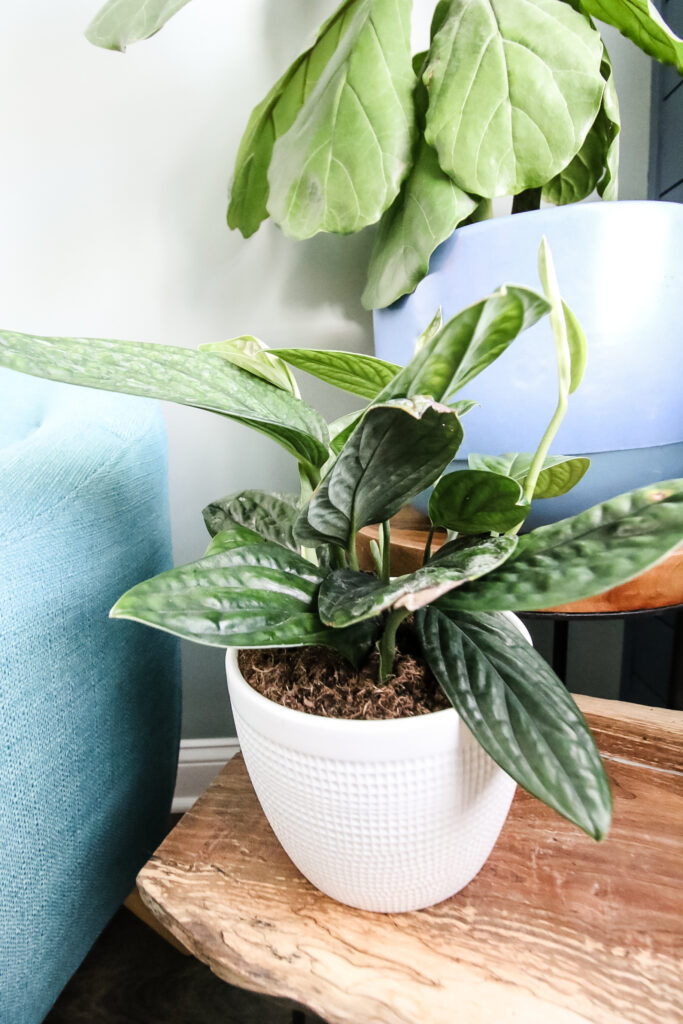
Pests
Some of the most common pests that affect Monstera Peru plants include:
- spider mites
- mealy bugs
- scale
Spider Mites
- Presence of fine webbing on the leaves, stems, or between leaf nodes
- Small yellow or white spots on the leaves, which may later turn brown or cause leaf discoloration
- Stippling or speckling appearance on the leaves due to feeding damage
- Leaves may curl, wilt, or become distorted
- Visible tiny moving dots on the plant's surface (the spider mites themselves)
- In severe infestations, the plant's overall health may decline, and leaves may drop prematurely
Mealy Bugs
- White, cotton-like masses or clusters on the undersides of leaves, leaf nodes, or in leaf axils
- Sticky residue or honeydew on the leaves, which can attract ants or promote the growth of sooty mold
- Distorted or stunted growth of new leaves or shoots
- Presence of small, soft-bodied insects with a waxy or powdery appearance
- Yellowing or wilting of leaves, especially in severe infestations
- Weakened plant health and reduced vigor
Scale
- Raised bumps or scales on the stems, leaves, or leaf nodes of the plant
- Sticky residue or honeydew on the leaves, attracting ants or causing sooty mold growth
- Yellowing or wilting of leaves, often accompanied by leaf drop
- Stunted growth or distorted leaves
- Presence of small, immobile insects that resemble tiny shells or discs, often brown, white, or black in color
- Weakened plant vitality, reduced vigor, and susceptibility to other issues if left untreated
What to do about it
Most of these pests can be treated with insecticidal soaps or neem oil.
You can help to prevent future pest infestations through regular inspections and maintaining a clean and healthy environment for the plant.
A. Identify common pests that can affect Monstera Peru plants, such as spider mites, mealybugs, or scale insects B. Describe the signs and symptoms of pest infestation C. Suggest effective methods for pest control, including organic remedies or the use of insecticidal soaps or neem oil D. Provide tips on preventing future pest infestations through regular inspections and maintaining a clean and healthy environment for the plant

Root Rot
Root rot happens when plants are overwatered. Roots that are submerged in stagnant water are unable to absorb oxygen and will die and then rot.
This can be caused by over watering, a lack of drainage in the pot, or using the wrong kind of potting mix (something that doesn't drain well).
Rotten roots will be dark brown or black and mushy to the touch. They often are stinky, too.
What to do about it
If your plant has rotten roots, gently pull it from the soil and rinse them off. Cut off any rotten roots.
If there are still plenty of roots left, re-pot in fresh soil. If not, stick in water to propagate with new roots.
Make sure that your new pot uses well draining soil and has drainage holes.
Remember that the most important thing is to pay attention to your plant. Notice when it starts to struggle and work to make changes and you can get it looking great again in no time!
Thanks for reading!


Hey there, I'm Morgan, a houseplant enthusiast from sunny Charleston, South Carolina. Growing up surrounded by my mom's lush orchids and African violets, I discovered the magic of bringing nature indoors. Thanks to the pandemic, I delved deeper into houseplants, discovering their power to uplift moods and transform spaces. I'm here to spill all my secrets, helping you pick the perfect houseplant - and make it happy. Let's keep your plants alive, together! 😊

